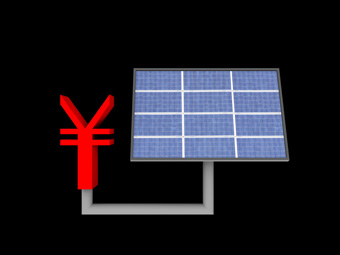The Land of the Rising Sun starts Worlds Most Ambitious Solar Program
 The entire world watched as the Fukishima nuclear disaster emerged, provoking huge anti-nuclear sentiments worldwide. Now the world now turns it eyes to Japan again but for different reasons this time. Japan is now set to take up one the world’s most ambitious feed-in tariffs.
The entire world watched as the Fukishima nuclear disaster emerged, provoking huge anti-nuclear sentiments worldwide. Now the world now turns it eyes to Japan again but for different reasons this time. Japan is now set to take up one the world’s most ambitious feed-in tariffs.In the wake of Fukishima, Japan enacted a radical move: shutting down all of it’s nuclear energy based facilities down. Whilst Japan’s prime minister has recently ordered two nuclear reactors to be switched back online (amid concerns of power shortages this summer), it is also launching a very generous program to support the uptake of renewable energy.
Rumours emerged earlier in the year about Japan’s ambitious renewable energy program. These rumours were realised when on Monday, Japan approved incentives for renewable energy that could unleash billions of dollars in clean-energy investment and help the world’s third-biggest economy shift away from a reliance on nuclear power.
Industry Minister Yukio Edano has set the price paid to solar power system owners for electricity at a level that should drive at least $9.6 billion investment in 3.2 gigawatts of solar PV capacity according to Bloomberg New Energy Finance.
Utilities will pay 42 yen (AUD 52.4 cents) per kilowatt-hour for at least 20 years to owners of solar power systems. Whilst the price for wind power will be set at a minimum of 23.1 yen per kWh, compared with as low as 4.87 euro cents (6 U.S. cents) in Germany.
New Energy Finance says that whilst Japan ranked sixth globally in terms of new PV installations last year, 2013 will see up to 4.7 gigawatts installed - creating enough electricity to power 4 million Japanese households.
Unlike other countries in the region, Japan has almost no domestic sources of fossil fuels to speak of, importing 98% of these resources. This has led to Japan’s balance of trade turning negative for the first time since 1980. After three decades of exports exceeding imports, Japan’s increased imports of fossil fuels are limiting Japan’s future growth prospects
However, this could be set to change with Bloomberg predicting that Japan will leapfrog past Germany and Italy in solar PV capacity growth, with only China ahead of it
The subsidies from July 1 are one of the few certainties in Japan’s energy landscape. The government is now radically re-writing the it’s energy future thanks mostly to the Fukushima radiation crisis - the world’s worst nuclear disaster since Chernobyl in 1986.
Japan’s solar industry is beginning to buzz with the news, but the positive impacts for the entire Asia-Pacific region are immense. With such close proximity to China, Japan’s ambitious renewable energy program will undoubetdly shift the current solar focus from Europe to Asia. Many in the industry are beginning to herald this as the energy revolution that the region needs.
Increased investment in solar power will see improved research and development and huge reductions in the prices of solar equipment worldwide - something that we can all look forward to.
You can return to the main Market News page, or press the Back button on your browser.

